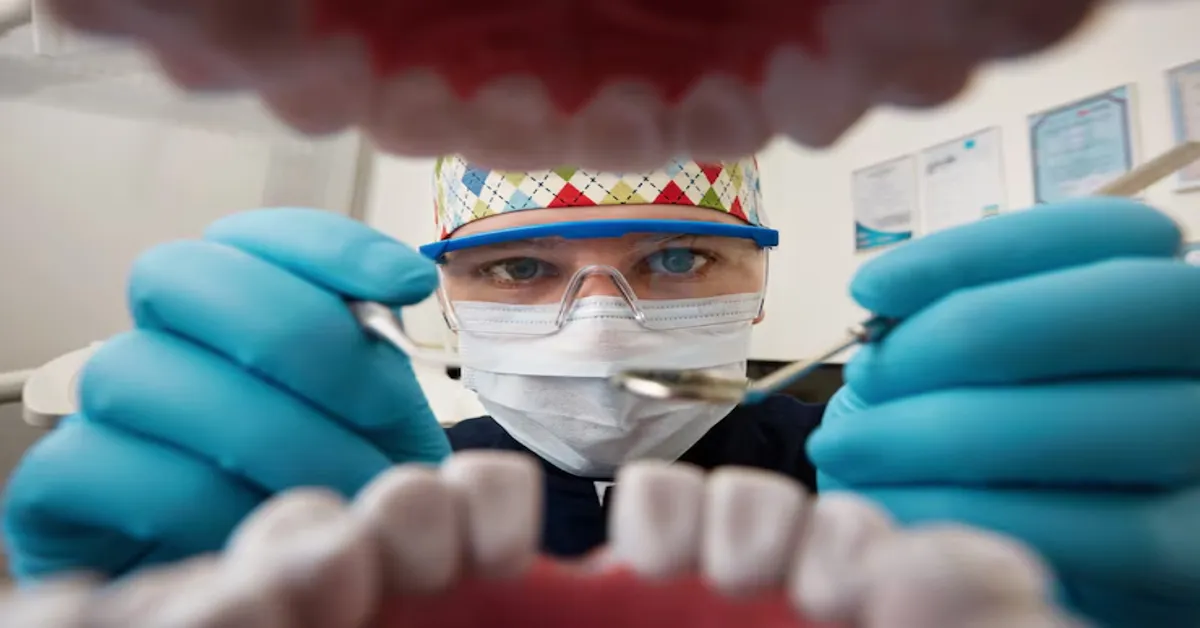In the ever-evolving field of cosmetic dentistry, where confidence is often restored one smile at a time, few treatments hold as much public fascination as dental veneers. Known for transforming chipped, stained, or misaligned teeth into flawless facsimiles of dental perfection, veneers have earned their place in both popular imagination and modern dental practice. But as demand for cosmetic enhancements increases, so do the questions—and one in particular stands out: Can veneers replace missing teeth? – Dental Veneers For Missing Teeth.
This article dives deep into the topic of dental veneers for missing teeth, unraveling what’s fact, what’s misconception, and what the future may hold for patients seeking aesthetic and functional restoration.
What Are Dental Veneers?
Dental veneers are thin shells—typically made from porcelain or composite resin—that are bonded to the front surface of existing teeth. Designed to mimic the appearance of natural enamel, veneers improve the color, shape, size, or length of teeth while offering durability and stain resistance.
They are widely used to address:
- Discoloration
- Minor misalignments
- Gaps between teeth
- Chipped or worn enamel
But veneers, as they are traditionally designed, require an underlying tooth structure to anchor to. This immediately introduces a complication in their application for missing teeth.
Can Veneers Be Used to Replace Missing Teeth?
The short answer: No, veneers cannot replace missing teeth directly.
Veneers are a cosmetic overlay. Without a tooth present to serve as a foundation, there is nothing to bond the veneer to. Unlike crowns, bridges, or implants, veneers are not structural replacements. However, veneers can play a role in broader treatment plans that address missing teeth.
That said, the rise in hybrid treatment models has introduced the idea of veneer-like prosthetics or cosmetic facades for adjacent or prosthetic structures, which we’ll explore further.
Understanding the Anatomy of a Tooth Replacement
When a tooth is missing, three core elements are typically absent:
- Crown – the visible part above the gum line
- Root – the part embedded in the jawbone
- Alveolar Bone – which gradually deteriorates after tooth loss
Any replacement strategy must consider both form and function. Solutions include:
- Dental Implants: Titanium screws surgically placed in the jaw, supporting a crown.
- Bridges: Crowns placed on adjacent teeth with a prosthetic tooth in between.
- Dentures: Removable or fixed prosthetics for multiple missing teeth.
In all these options, a veneer may serve an aesthetic enhancement, but it does not fulfill the structural role.
When Are Veneers Used in Tandem With Missing Tooth Solutions?
Veneers often enter the equation as part of comprehensive smile makeovers, where one or more teeth are missing and others are in suboptimal shape. For instance:
- In a case where a patient has one missing tooth and surrounding teeth with chips or stains, a dentist may place a dental implant in the gap and use veneers on adjacent teeth for color harmony and symmetry.
- For patients receiving dental bridges, veneers might be applied to abutment teeth to ensure uniformity in shade and contour.
- In all-on-4 implant systems, which replace full arches, veneers may be mimicked in the design of the prosthetic teeth for a natural appearance.
This holistic approach blends function with aesthetic excellence.
Alternatives to Veneers for Missing Teeth
Since veneers themselves cannot address tooth loss, here are the leading alternatives:
1. Dental Implants
- Best for: Single or multiple missing teeth
- Longevity: 15+ years with proper care
- Aesthetics: Can be color-matched and shaped to resemble adjacent natural teeth
2. Fixed Bridges
- Best for: Gaps flanked by healthy teeth
- Durability: 10–15 years
- Consideration: Requires reshaping adjacent teeth
3. Removable Partial Dentures
- Best for: Non-permanent solutions or financial limitations
- Cost-effective, but may lack stability and aesthetics
4. Implant-Supported Bridges or Dentures
- Best for: Multiple missing teeth
- Combination of durability and aesthetics
- Mimics the look of veneers when crafted with ceramic or composite materials
Cosmetic Misconceptions and Market Confusion
The increasing availability of direct-to-consumer dental products and aesthetic dentistry influencers has muddied public understanding. Online searches and social media often blur the lines between veneers, crowns, and implant restorations, leaving patients with misleading impressions.
Some common misconceptions include:
- “Snap-on veneers” can replace missing teeth. (These are cosmetic prosthetics, not true veneers.)
- Veneers are a form of tooth replacement. (They are not.)
- You can get veneers over implants. (Only implant crowns, which may resemble veneers, apply here.)
Dentists emphasize the importance of patient education and customized consultations to navigate these nuances.
The Role of Digital Dentistry in Tooth Replacement Aesthetics
Advancements in digital imaging, CAD/CAM technology, and 3D printing have revolutionized prosthetic design. These tools allow dental professionals to:
- Design crowns and bridges with veneer-like aesthetics
- Digitally match veneer color with implants
- Scan and simulate entire smile arcs
These technologies are closing the gap between functional restorations and cosmetic enhancements.
Psychological and Emotional Considerations
Tooth loss is not merely a physical issue—it carries deep emotional and psychological ramifications. Patients often report:
- Loss of self-esteem
- Reluctance to smile or engage socially
- Anxiety about dental work
Veneers, even when used adjacent to missing teeth replacements, can dramatically enhance patient confidence. Achieving a harmonious smile line—even if veneers aren’t placed directly over the prosthetic—can create a transformational impact.
Costs, Insurance, and Accessibility
Veneers are typically categorized as cosmetic and are not covered by dental insurance. However, procedures related to tooth replacement, such as implants or bridges, may be partially covered if medically necessary.
A breakdown:
- Veneers: $800–$2,500 per tooth
- Implants: $3,000–$5,000 per tooth
- Bridges: $2,000–$4,000 depending on number of units
Patients are advised to work with their dental provider on a comprehensive treatment plan that prioritizes oral health while considering aesthetic goals.
Future of Veneer-Like Materials in Tooth Replacement
Ongoing research is exploring composite and ceramic materials that combine the ultra-thin form factor of veneers with the durability required for prosthetic teeth. Future innovations may include:
- Biocompatible veneers over mini-implants
- Hybrid veneer-crown composites for partial replacements
- Fully 3D-printed smile arches that mimic natural tooth texture
These advances may redefine how we think about veneers and their role in the tooth replacement paradigm.
Final Thoughts: Aligning Expectations With Possibilities
While the allure of veneers for missing teeth speaks to our desire for minimally invasive, aesthetic solutions, the clinical reality is more complex. Veneers remain powerful tools—but not stand-alone solutions—for tooth loss.
Their role is best understood as part of a broader aesthetic strategy, enhancing what surrounds a missing tooth rather than replacing it outright. With proper planning, veneers and prosthetic restorations can coexist beautifully—restoring not just smiles, but confidence, dignity, and joy.
In the world of cosmetic dentistry, understanding both the capabilities and the limits of each option is not just good practice—it’s essential for long-term success and patient satisfaction.
FAQs
1. Can dental veneers be used to replace missing teeth?
No, veneers cannot replace missing teeth. They are thin coverings applied to existing teeth and require a natural tooth structure to function. For actual tooth replacement, options like implants, bridges, or dentures are more appropriate.
2. Why do people think veneers can replace missing teeth?
Misconceptions often arise from online content or marketing of “snap-on veneers,” which are cosmetic devices—not permanent dental treatments. Veneers enhance aesthetics but don’t restore missing tooth function or support bone health.
3. What are the best alternatives to veneers for missing teeth?
Dental implants, fixed bridges, and implant-supported dentures are the most effective solutions. These options restore both the function and appearance of missing teeth, with implant crowns often resembling veneers in appearance.
4. Can veneers be used alongside other tooth replacement options?
Yes. Veneers are commonly used in smile makeovers to complement implants or bridges by improving the look of adjacent natural teeth, ensuring a harmonious, aesthetically pleasing result.
5. Are veneers or implants covered by dental insurance?
Veneers are usually considered cosmetic and not covered. Implants or bridges may be partially covered if medically necessary. Patients should consult with their provider to explore financing or coverage options.











